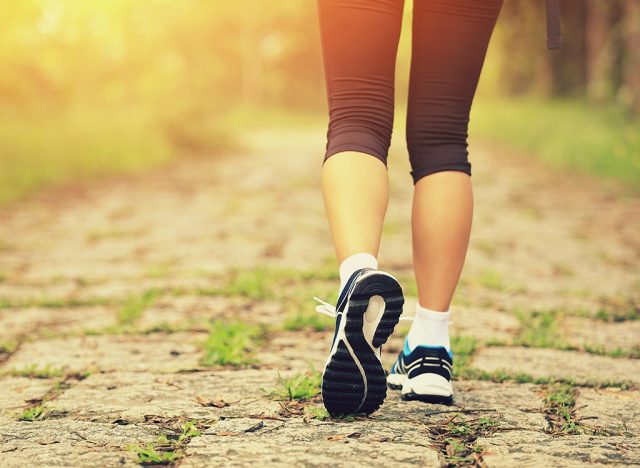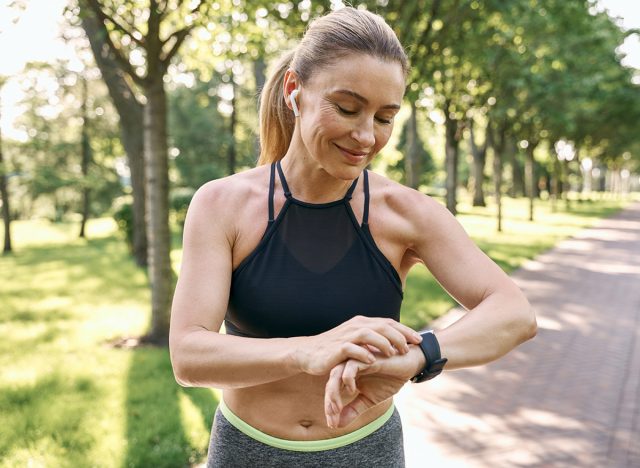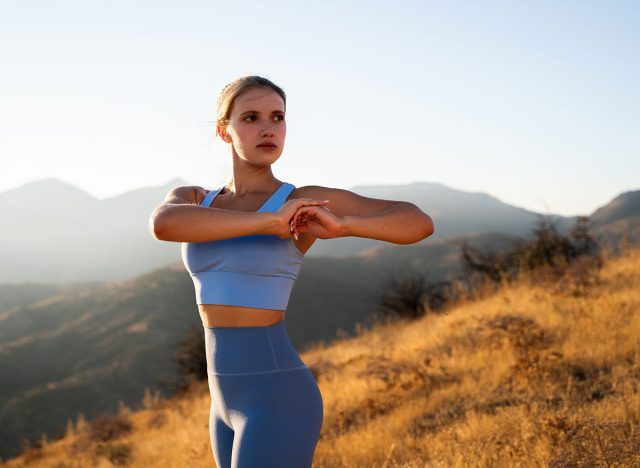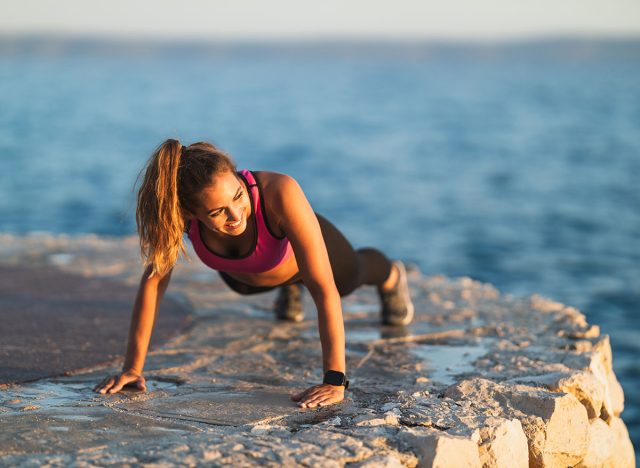5 Morning Exercises That Reverse Aging Faster Than the Gym After 50

Most people over 50 assume that declining strength, stiffness, and lost independence are just part of getting older. The reality is different. In my 40 years in the fitness industry—first as a gym instructor, then as a personal trainer, and now delivering PT courses to the next generation of trainers – I’ve watched hundreds of people reverse these changes with the right approach. I’ve always been interested in training older adults and have tried to instill that feeling in our students too, as helping them improve their fitness can be literally life-changing. What makes morning exercise so powerful is that it works with your body’s natural rhythms, tackles multiple aspects of aging at once, and gets done before life gets in the way. Keep reading to discover the five exercises that can restore capabilities you thought were gone and how to structure them into a routine that takes less than 25 minutes.
What Makes It Harder for You to Stay Active and Fight Aging After 50?

In my 30 years working with people over 50, I’ve noticed the same pattern repeat itself hundreds of times. It’s not one big thing that stops people from staying active—it’s a combination of smaller changes that all happen at once and feed into each other.
Our hormones shift in ways that make everything harder. Testosterone drops in both men and women (yes, women produce it too), growth hormone production falls off, and thyroid function often slows down. These hormonal changes mean we recover more slowly from exercise, build muscle less easily, and carry more fat even when we’re eating the same amount we always have.
Our joints start complaining. The cartilage that cushions our knees, hips, and spine has been compressed for five decades. Small amounts of wear and tear accumulate. Morning stiffness becomes normal. Getting down on the floor to play with grandchildren feels like a big commitment because getting back up is hard work. This discomfort makes people avoid movement, which actually makes the stiffness worse.
Energy levels drop, but not for the reason most people think. It’s not just aging—it’s that we’re less active, so our mitochondria (the energy factories in our cells) become less efficient. We get tired more easily, so we move less, which makes us more tired. It’s a vicious circle.
Sleep quality deteriorates. We wake up more often during the night, spend less time in deep sleep, and don’t feel properly rested in the morning. When you’re tired, exercise is the last thing you feel like doing, even though it’s exactly what would help you sleep better.
Life also gets in the way more than it did when we were younger. Aging parents need care. Grandchildren need looking after. Careers are demanding. Retirement brings its own challenges—suddenly having all day free sounds great until you realise you’ve lost the structure that kept you moving. Without the daily walk to the station or the office stairs, activity drops without us noticing.
The biggest issue, though, is that we adapt to these changes so gradually that we don’t realise how much we’ve declined. We start avoiding stairs, holding onto railings more, and taking the car instead of walking. Each small compensation hides how much fitness we’ve lost until something forces us to confront it—an injury, a health scare, or suddenly realising we can’t do something we managed easily a year ago.
Why Morning Exercises Work for Reversing Your Aging

Morning exercise works because it tackles aging from multiple angles at the same time. When you exercise first thing, you’re working with your body’s natural rhythms rather than against them.
Your cortisol levels are naturally highest in the morning—this is the hormone that gives you energy and alertness. When you exercise during this cortisol peak, you’re using that energy productively. It sets up your metabolism for the entire day. Your body burns more calories for hours afterwards, even when you’re sitting at your desk or doing housework.
Morning exercise also regulates all your other hormones. It triggers growth hormone release, which helps rebuild muscle and repair tissue. It improves insulin sensitivity, meaning your body handles blood sugar better throughout the day. For men, morning resistance training can boost testosterone naturally. These hormonal benefits are stronger in the morning than later in the day.
Here’s something most people don’t know—morning exercise actually makes you more energetic, not less. It sounds backwards, but moving first thing wakes up your entire system. Your mitochondria start producing energy more efficiently. Blood flow increases to your brain. You’ll feel more alert and focused all morning, rather than sluggish and foggy.
The psychological benefit is huge, too. When you exercise first thing, it’s done. You can’t talk yourself out of it later when you’re tired or busy. Life can’t get in the way because you’ve already completed it before the day properly starts. That consistency is what produces results—and morning exercisers stick with their routines far more reliably than people who plan to exercise later.
Morning movement also helps with the stiffness that plagues most people over 50. You’re lubricating your joints, warming up muscles that have been static all night, and restoring range of motion. This makes everything you do for the rest of the day easier and less painful.
Your Complete Morning Routine: How to Structure It

The complete routine takes 20-25 minutes, including a proper warm-up and cool-down. That’s it. Less time than most people spend scrolling through their phone over breakfast.
Here’s how to structure it:
Warm-Up (5 minutes):
- 2 minutes of marching on the spot or walking around
- 10 arm circles forward and backward
- 10 leg swings, each leg (front to back)
- 10 torso twists
- 5 practice squats with no weight
This isn’t optional. Your muscles, joints, and nervous system need waking up. Jumping straight into squats on cold muscles is asking for injury.
Main Exercises (15 minutes):
- Bodyweight squats: 3 sets of 12 reps
- Press-ups: 3 sets of 10 reps
- Walking lunges: 3 sets of 10 total
- Dead bugs: 3 sets of 10 total
- Glute bridges: 3 sets of 12 reps
Rest for 30-60 seconds between sets. Use this time to walk around, shake out your muscles, and breathe properly. Don’t sit down.
Do the exercises in this order. We start with the biggest movements (squats) when you’re freshest, then move to upper body, then single-leg work, then core and posterior chain. This order prevents fatigue from affecting the movements that need the most concentration.
Cool-Down (3-5 minutes):
- Walk slowly for 2 minutes
- Stretch your quads (hold for 30 seconds each leg)
- Stretch your hip flexors (hold for 30 seconds each side)
- Stretch your chest and shoulders (30 seconds)
Again, this isn’t optional. Skipping the cool-down means more stiffness later and slower recovery.
This routine needs to be done at least 3 times a week. Monday, Wednesday, and Friday work well. If you can manage 4 times, then that’s even better. Don’t do more than that, though—you need recovery days so your muscles can rebuild and get stronger.
On your off days, go for a walk, do some gentle stretching, or just rest completely. Your body needs those recovery days as much as it needs the workout days.
Bodyweight Squats

How does it work:
Squats are the single most important movement for maintaining independence as we age. They build your quadriceps, glutes, and hamstrings—the exact muscles that deteriorate fastest after 50. Strong legs mean you can get off the toilet, out of chairs, and up from the floor without help. Squats load your bones, which stimulates bone density and fights osteoporosis. They improve balance and coordination, reducing fall risk. The movement pattern mimics dozens of daily activities.
How to do it:
- Stand with feet hip to shoulder-width apart, toes pointing slightly outward
- Keep your chest up and eyes looking straight ahead (not down)
- Push your hips back as if sitting into a chair behind you
- Lower yourself down until your thighs are roughly parallel to the floor (or as low as comfortable)
- Your knees should track in the same direction as your toes
- Push through your whole foot to stand back up
- Squeeze your glutes at the top
Start with 2 sets of 10 reps. Build up to 3 sets of 15.
Avoid these mistakes:
- Don’t let your knees cave inward (push them out in line with your toes)
- Don’t round your lower back (keep your chest proud)
- Don’t come up onto your toes (keep your heels down)
- Don’t hold your breath (breathe in on the way down, out on the way up)
- Don’t rush the movement (control matters more than speed)
- Don’t worry if you can’t go deep at first (range of motion improves with practice)
Press-Ups (Modified if needed)

How does it work:
Press-ups build upper body strength that we lose rapidly after 50. They work your chest, shoulders, triceps, and core all at once. Strong arms and shoulders mean you can push yourself up from the floor, out of bed, or catch yourself if you fall. They improve bone density in your arms and wrists. Press-ups build core stability that protects your lower back. They’re one of the best exercises for improving posture (fighting the forward slump that comes with age).
How to do it:
- Start on your hands and knees (box position) if you’re new to this
- Place your hands slightly wider than shoulder-width
- Keep your body in a straight line from head to knees
- Lower your chest down towards the floor by bending your elbows
- Keep your elbows at about 45 degrees to your body (not flared straight out)
- Push back up until your arms are straight
- If box press-ups are too easy, progress to full press-ups (toes instead of knees)
Start with 2 sets of 8 reps. Build up to 3 sets of 12.
Avoid these mistakes:
- Don’t let your hips sag down (keep your core tight)
- Don’t stick your bottom up in the air (maintain a straight line)
- Don’t let your elbows flare straight out to the sides (this strains your shoulders)
- Don’t hold your breath (breathe in as you lower, out as you push up)
- Don’t give up on form when you get tired (stop the set instead)
- Don’t feel embarrassed about starting on your knees (everyone starts somewhere)
Walking Lunges
How does it work:
Lunges train single-leg strength, which is critical for walking, climbing stairs, and balance. They work through a full range of motion, maintaining hip flexibility. The movement improves coordination and proprioception (your body’s sense of where it is in space). Lunges strengthen all the stabilising muscles around your knees and ankles. They build the exact strength pattern you need for walking confidently. The balance challenge reduces fall risk more than squats alone.
How to do it:
- Start standing with feet hip-width apart
- Step forward with your right foot (a good stride length, not too short)
- Lower your back knee down towards the floor
- Your front knee should be roughly over your ankle
- Both knees should end up at about 90 degrees
- Push through your front foot and bring your back leg forward to standing
- Repeat with the left leg forward
- Continue alternating legs, walking forward across the room
Start with 2 sets of 10 total lunges (5 each leg). Build up to 3 sets of 12 each leg.
Avoid these mistakes:
- Don’t let your front knee cave inward (track it over your middle toe)
- Don’t let your front knee push way past your toes (step further forward)
- Don’t lean forward excessively (stay upright through your torso)
- Don’t rush the movement (steady and controlled wins)
- Don’t worry if you wobble at first (balance improves quickly)
- Don’t take too short a step (this puts strain on your front knee)
Dead Bug Exercise
How does it work:
This exercise builds deep core strength that protects your lower back. It improves coordination between your left and right sides. Dead bugs teach your core to stabilise your spine while your limbs move (exactly what you need for safe daily movement). They improve the connection between your brain and your muscles. Strong core stability reduces back pain and improves posture. The movement pattern helps with balance and prevents compensatory movement patterns.
How to do it:
- Lie on your back with your arms straight up towards the ceiling
- Lift your knees so your thighs are vertical and your shins are parallel to the floor
- Press your lower back flat against the floor (this is critical)
- Slowly extend your right arm overhead while straightening your left leg
- Lower them both until they’re hovering just above the floor
- Keep your lower back pressed to the floor throughout
- Bring your arm and leg back to the starting position
- Repeat with the opposite arm and leg
Start with 2 sets of 10 total reps (5 each side). Build up to 3 sets of 12 each side.
Avoid these mistakes:
- Don’t let your lower back arch off the floor (this is the most common mistake)
- Don’t hold your breath (breathe naturally throughout)
- Don’t rush the movement (slow and controlled is the point)
- Don’t extend your limbs too far if your back starts to arch (stop at the point where you can keep your back flat)
- Don’t tense your neck and shoulders (keep them relaxed)
- Don’t worry if you can only go a short distance at first (range improves quickly)
Glute Bridges
How does it work:
Glute bridges target the muscles that weaken most as we age—your glutes. Weak glutes are the main cause of lower back pain in people over 50. Strong glutes protect your knees and hips from injury. This exercise counteracts the hip flexor tightness that comes from sitting. Bridges improve hip mobility and extension (the movement that gets limited as we age). They activate and strengthen the posterior chain (the entire back of your body).
How to do it:
- Lie on your back with your knees bent and feet flat on the floor
- Your feet should be hip-width apart and close enough to your bottom that you can touch your heels with your fingertips
- Press through your heels and lift your hips up towards the ceiling
- Squeeze your glutes hard at the top
- Your body should form a straight line from your shoulders to your knees
- Hold for 2-3 seconds at the top
- Lower back down with control
Start with 2 sets of 12 reps. Build up to 3 sets of 15.
Avoid these mistakes:
- Don’t lift too high (your back shouldn’t arch excessively)
- Don’t push your hips up using your lower back (the lift should come from your glutes)
- Don’t let your knees fall inward or outward (keep them stable)
- Don’t hold your breath (breathe out as you lift, in as you lower)
- Don’t forget to squeeze your glutes at the top (this is where the benefit happens)
- Don’t rush through the reps (hold at the top, lower with control)
What Results You Can Realistically Expect

The first changes happen faster than most people expect, but they’re not what you might think.
After the first week, you’ll notice that you’re waking up more easily. Your morning energy levels will be higher. Your metabolism is responding to regular morning movement—straight away, your body starts producing energy more efficiently.
After a couple of weeks, everyday movements will feel less challenging. It’s less effort to get out of your chair. You’re not out of breath going up the stairs. Bending down to get something off the floor doesn’t fill you with dread. Your nervous system is getting better at activating your muscles, and you’re getting some initial strength gains.
By the middle to the end of the second month of training, you will notice that your body is starting to change. More solid legs, tighter core, and you are standing taller without having to consciously focus on it. Your clothes might have started to fit differently—tighter around the tops of your legs and looser around the waist.
By three months, other people will have started to notice. Your friends and family will comment on things like you moving better, standing up straighter, or simply that you look healthier. Your posture will be noticeably better, and activities that were incredibly tough at the beginning now seem normal.
Here’s what I typically see with people over 50 who stick with this routine:
- 15-25% strength increase in the first 8 weeks
- 30-40% strength increase by 6 months
- Noticeable improvement in balance and coordination within 4 weeks
- Reduced joint stiffness and pain within 2-3 weeks
- Better sleep quality within 2 weeks
- Visible muscle tone changes by 3-4 months
The initial improvements are more dramatic the older or more sedentary the person starting to train is. I’ve worked with numerous people in their 60s who have tripled their strength in as little as 6 months, as they were starting from such a low point.
But the real results go beyond what you see in the mirror. You’ll regain capabilities you thought were gone. Getting up off the floor without using your hands. Carrying heavy shopping bags. Playing actively with grandchildren. Walking without fear. These are the things that actually matter.
Your biological age will start running in reverse. A 55-year-old who does this consistently for 6 months can have the physical capability of someone 10 years younger. Your bones will be denser. Your balance will be better. Your cardiovascular system will be more efficient. Your joints will move more freely.
Why Consistency Is Everything for Your Success

To see these results, consistency is non-negotiable. You need to complete your training three to four times a week, every week for months. You can miss the odd session—if you’re run down or ill, pushing through just increases injury risk—but when you are well, you need to train no matter what, even if you don’t feel motivated, otherwise you won’t see results.
Our bodies need regular and repeated stimulus to improve. So many people quit too early, working out for 3-4 weeks, and stop because they don’t see dramatic changes. In reality, in the first month, our bodies are just learning the movements and waking up the nervous system. Real transformation starts to happen in months 2-6. This is the point where you rebuild what aging took away.